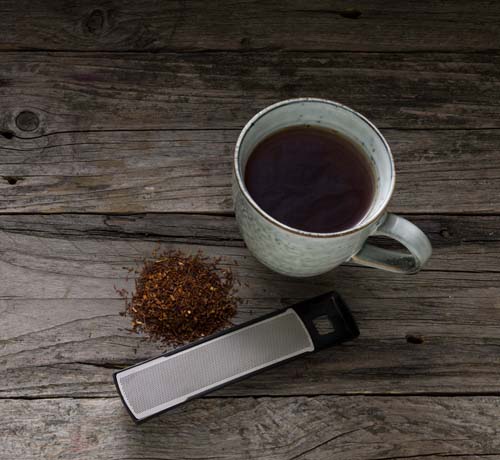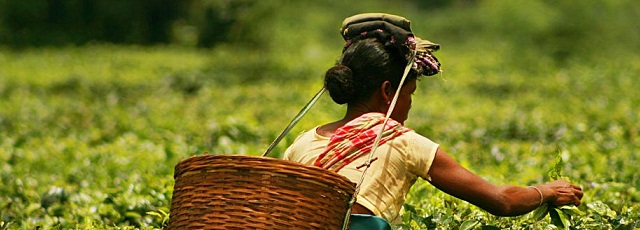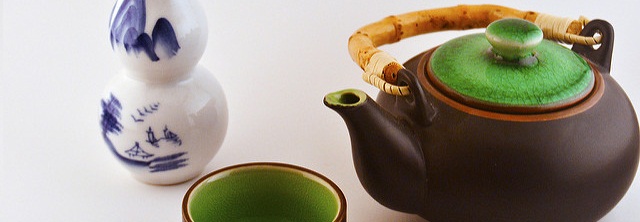Labeled as the world’s second-biggest tea producer and the primary consumer of tea, India is a country with an interesting and complex connection to the plant. In 2013 the green tea consumption had grown by the whopping 50%, putting the country on the fast track of developing an even bigger market for their product. When it comes to tea – India has always been a synonym for quality and tradition.
History of the tea in India
Tea has been used in India as a medicine since 750BC when herbs like mint, licorice, pepper, and cardamom were utilized. The practice of boiling herbs in order to drink them has been referred to in the Ramayana. Later there are mentions of Buddhists utilizing the herbal drink.
Tea became widely popular and commercially produced thanks to the Brits. The British Empire relayed heavily on China in order to obtain their beloved tea. Soon though, it became obvious to England that they needed to find other suppliers for the herb, as China’s monopoly of tea was not in their favor.

The Drosselmeyer Tea Infuser. Visit our Shop
Chinese tea seeds, techniques, and processing methods were introduced in India. The land was offered in the province of Assam to any European who agreed to produce tea for the British Empire. The British East Company started cultivating tea in big quantities during the 1820’s, establishing their selves as the dominant producer of the herb. The tea trade was on a fast track of developing and in 1850 Assam was already the biggest region to produce tea in large quantities in the world.
In 1837 the first tea garden was build in Chabua. In India, the tea gardens work in a specified hours known as Bagantime or “Tea Garden Time” and it does not conform with the Indian Standard Time (IST). This tradition has kept ever since the Brits introduced it in order to save daylight. Workers, work in the garden from 9 a.m. (IST 8 a.m.) to 5 p.m. (ITS 4 p.m.)
Tea drinking in India
Indians consume their tea with milk and sugar. They boil the tea leaves with spices and a second time with the milk, making the brew very special. It is very common to buy tea from little street stalls in India.
Indian Teas
Darjeeling tea
Native to Darjeeling district in West Bengal it comes in many varieties – black, oolong, green and white. The main notes are floral, but it has undertones of tannic or musky spices.
1841, Arthur Campbell (a surgeon) was the first one to start cultivating tea in this region with seed he brought from Kuman. Production in bigger quantities was established in 1850. There is a very specific rule as to what kind of tea can be labeled as Darjeeling tea. First of it must be grown in specific areas like Sadar, Kalimpong, and Kurseong. This type of tea has been given a specific geographical indication tag by the Indian Patent office.
The white Darjeeling tea is on the sweeter side, the oolong one is muscatel aroma and the green Darjeeling has a more mellow taste.
Assam tea
As the name suggests, this black tea is produced in Assam and from Camellia sinensis var. assamica plant. It has a bright color and malty taste that can be attributed to the warm climate in the region. It is grown at sea level, unlike the Darjeeling tea that grows on highland for example. Assam tea is cultivated near the Brahmaputra River as the soil there is rich in minerals.
The first link between Assam tea and Europe was a Scottish adventurer of the name of Robert Burce. He stumbled upon a plant while he was trading in the region and wanted to explore it. Unfortunately, he died before he was able to establish what kind of a plant this was. But his brother – Charles send a couple of leaves to Calcutta to be examined. It was determent the plant is a type of tea.
Kangra tea
Produced in the Kangra district, it also has a Geographical indication since 2005. In 1848 the region was planted with Chinese variety of Camellia sinensis. Kangra is known as a very special and different kind of tea both in taste and color.
Around 1880 Kangra tea was gaining popularity, even the Kangra District Gazette wrote about Kangra tea – „superior to that produced in any other part of India”. It has also won a golden and silver medal in 1886 and 1995 in International conference in London and Amsterdam. Unfortunately, a disaster struck in 1905, earthquake destroying a lot of the plantations, which resulted in a minimal production of the tea. In 2012, Ananda Sharma (Union Minister for Commerce & Industry) made the first steps in reestablishing the Kangra district as an important part of the Indian tea producing industry.
Nilgiri tea
It is grown in the Nilgiri (or Blue mountains) district in the Western Chats Mountains. Nilgiri is a very dark, deeply flavored tea that is attributed to the weather conditions (60 – 90 inches of annual rainfall). A type of Nilgiri tea is the famous Orange Pekoe. A whopping price of 600 dollars per kilogram was given to the Nilgiri tea in November 2006. The first tries to grow tea in the region started around 1853 and it developed into a commercial production in 1859.
Dooars tea
Dooars, named after the region with the same name, translates like “Doors” which is very suitable as there are 18 gateways there (in the area between Bhutan and India). This is a very famous tourist destination. There is an annual 3.500 mm of rainfall in the area. The tea comes with a rich taste, especially with the second flush. It is often used as a way to delude the stronger blends. Dooars tea has a similar taste to the Assam tea, but it is not as strong and it is also cheaper.
Masala Chai
Technically this is a mixed spiced tea, which is also the translation of masala chai. It is made with black tea, milk, sugar and Indian spices. The original recipe calls for cardamom, cinnamon, ginger and peppercorn though there is not an official record of a recipe. A type of Assam tea is used called Mamri – it comes in the form of granules instead of leaves. Buffalo milk is mixed with water (¼ to ½), but outside of India, cow-milk is the common substitute.
Image Copyright: Akarsh Simha, License: CC BY-SA 2.0



